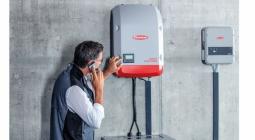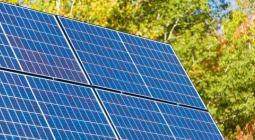Renewable energy ownership: A game plan for utilities.

For the past two decades, the primary investors in domestic renewable projects have been independent power producers (IPPs) — unregulated wholesale generators that sell their power to utilities, usually under long-term contracts. Yet, as the renewable energy industry matures, shifting consumer demand, along with regulatory and tax law changes, will lead to new players in the asset ownership mix — including investor-owned utilities.
With utilities expected to grow earnings, it will be increasingly difficult if they are forced to continue buying power from IPPs, where the costs are simply passed through to the customer with no return for the utility. Ownership of renewable generation would change the equation for utilities by integrating renewables into their rate base and growth strategies.
Historically, regulatory hurdles have often prevented utilities from building and operating renewable assets. To own the renewable asset, utilities need to have both a quantitative and qualitative story to tell regulators and customers.
The qualitative story typically involves the long-term benefits of ownership, including the upside potential for virtually free power after the asset is depreciated. It also includes the reduced exposure to market price volatility by eliminating the need for new power purchase agreements (PPAs) every 10 to 15 years.
The quantitative story has typically been a barrier. As an unintended consequence of certain tax laws, referred to as normalization, it is extremely difficult for utilities to sell power from renewable assets, particularly solar assets, at a competitive price.
Normalization rules pertain to depreciation and investment tax credits. The rules effectively require a utility to earn a return on the investment tax credit and calculate rates using book depreciation instead of tax.
IPPs, on the other hand, are not subject to these rules and can basically pass the benefit of the investment tax credit and the accelerated tax depreciation on to utility customers immediately. This creates a significant competitive advantage for the IPP.
As a result, most public utility commissions simply require utilities to purchase renewable energy from IPPs, rather than generate it themselves, to save consumers money on their bills.
Yet two critical changes are converging to reshape this traditional model.
Growth in green energy demand
The long-term contracts favored in the industry’s early days were driven by state mandates and utilities’ desire to demonstrate support for green energy. If a utility provided a nominal amount of power from wind or solar, everyone was happy.
However, rising climate change concerns, partnered with falling renewable energy costs, have amplified demand for green energy.
A stark majority of American consumers (91%) agree climate change is real, and three-quarters say it should be addressed now, according to an EY survey. Residential, commercial and industrial consumers are increasingly interested in buying renewable energy. To that end, a growing number of corporate consumers are now demonstrating an eagerness to leverage alternative paths — such as direct PPAs — to obtain renewable energy.
Combined with rising renewable energy standards in many states, significant growth in demand is putting tremendous pressure on utilities to offer a broad range of cost-effective renewable options.
Utilities also face an ever-evolving renewables market. In a small but growing number of states, new paths are being created for IPPs through a variety of deregulation initiatives (e.g., California’s community choice aggregation).
When viewed alongside an ever-expanding solar rooftop market, these choice programs will further burden utilities in those states to be competitive on price to achieve real and sustainable growth of renewable energy assets.
A phasedown of key tax incentives
Unsurprisingly, tax rules that inadvertently made it difficult for utilities to be cost competitive have provided unique advantages for IPPs.
For example, the long-standing federal tax credits, along with accelerated depreciation, played major roles in creating and growing the renewables business in the U.S. However, both credits are being phased down: 2019 is the last year to qualify a wind project for the production tax credit, and starting in 2020, the solar investment tax credit will start phasing down from its current 30% to only 10% for projects beginning in 2022.
The phasedown of these credits will certainly reduce the price gap between IPPs and utilities, but there are other tools available that might close this competitive pricing gap at an even quicker rate.
How utilities might accelerate ownership of renewables
Utilities need to identify solutions that enable them to own renewables at competitive costs.
One potential path to achieving this goal is tax equity financing. Tax equity structures could enable utilities to monetize their tax attributes by effectively selling them to a bank or other investor — enabling the utility to recover a portion of their investment and lower their price for energy produced.
In the past, tax equity vehicles have been used extensively by IPPs to quickly monetize their investments. Although utilities face some unique challenges in utilizing tax equity, many are now looking for ways to take advantage of the structure to benefit both their customers and shareholders.
Closing the competitive price gap will provide utilities with a strong qualitative and quantitative message to take to their regulators and customers: by owning wind and solar, utilities will be meeting customer and societal demand for renewable energy at an affordable price.
And most important, once utility-owned assets are fully depreciated, the cost of power is almost free (limited to basic maintenance and taxes) while the facility is in operation. Consequently, many public utility commissions are already eager for utilities to own their renewable energy assets.
In an industry where change has historically come slowly, this new paradigm can be challenging. Yet the benefits of renewable energy ownership for utilities, customers, shareholders and the environment at large are worth the effort.
The views reflected in this article are the views of the author and do not necessarily reflect the views of Ernst & Young LLP or other members of the global EY organization.
22 May 2019




